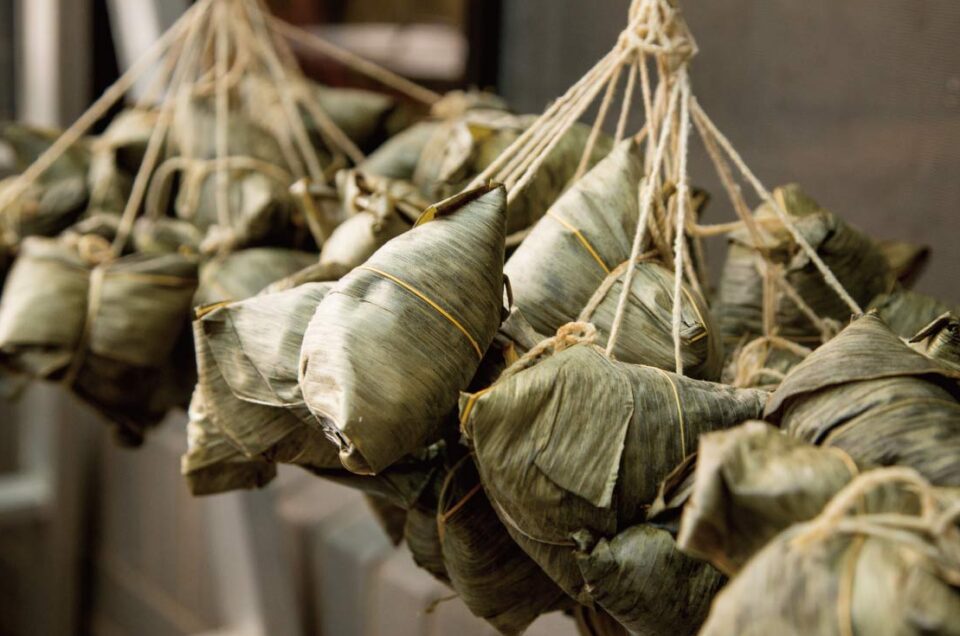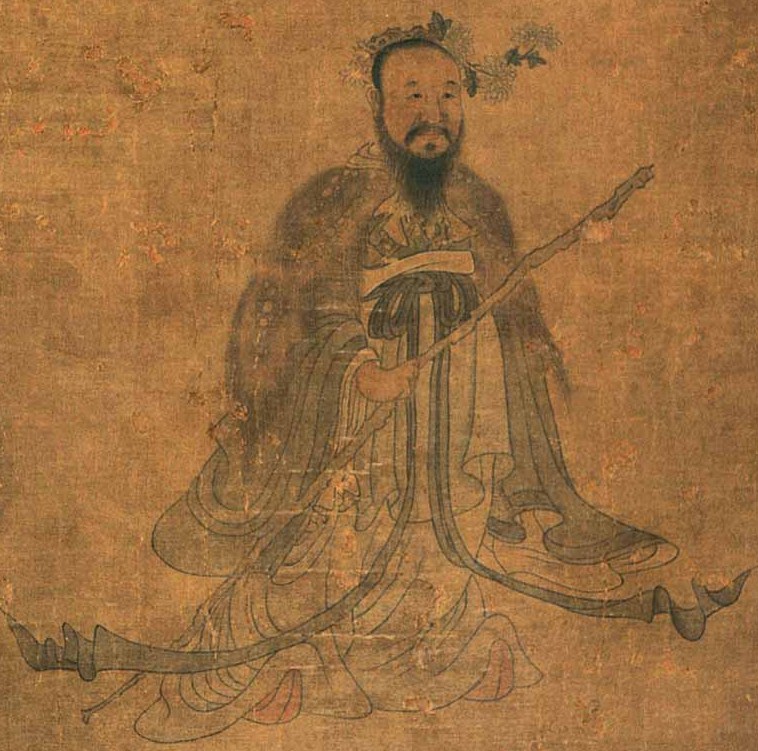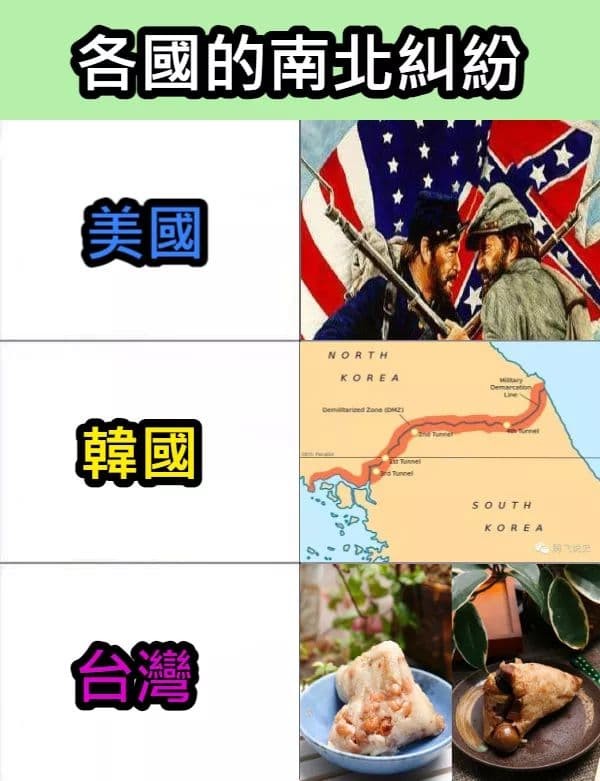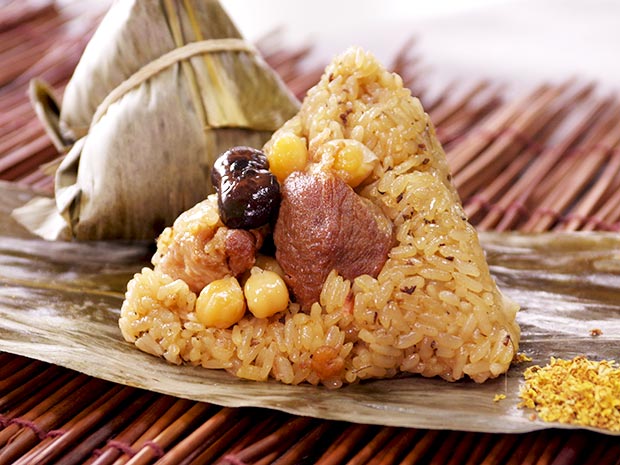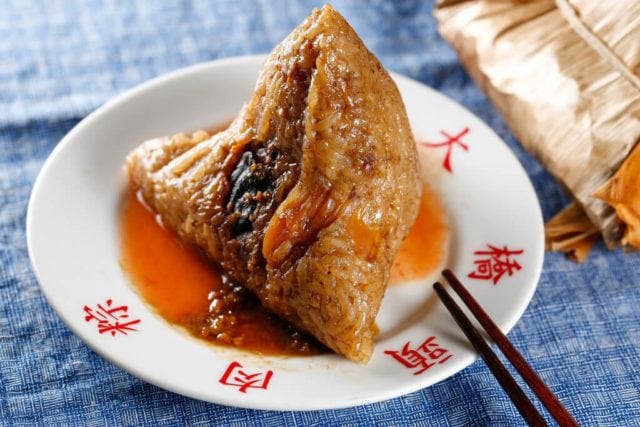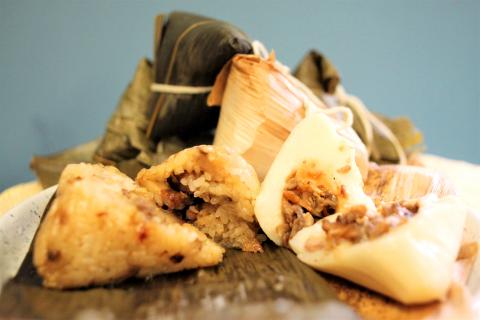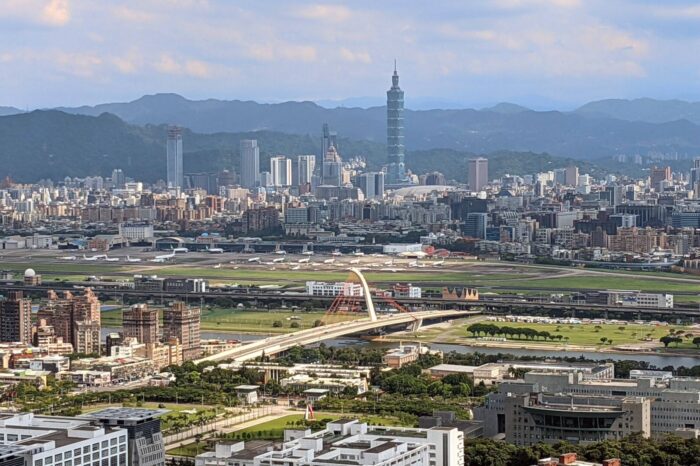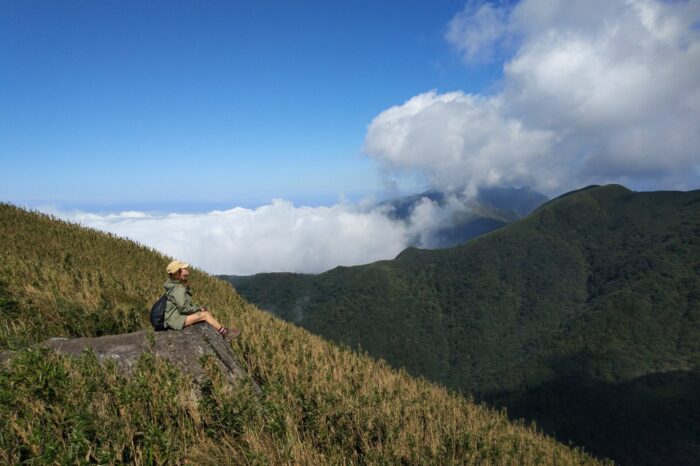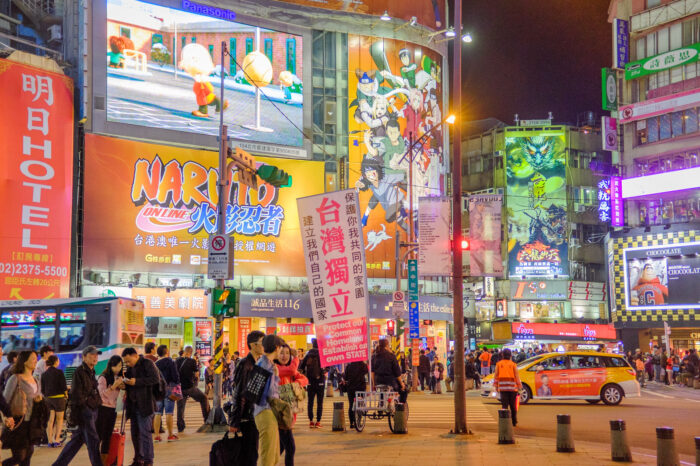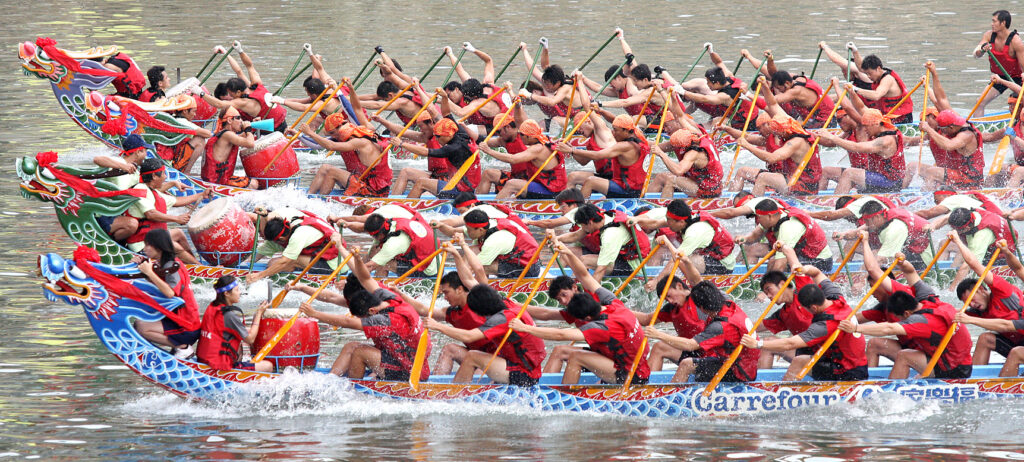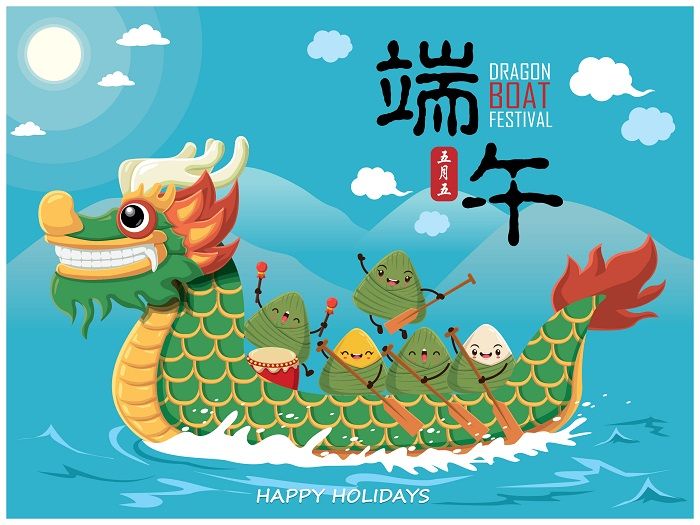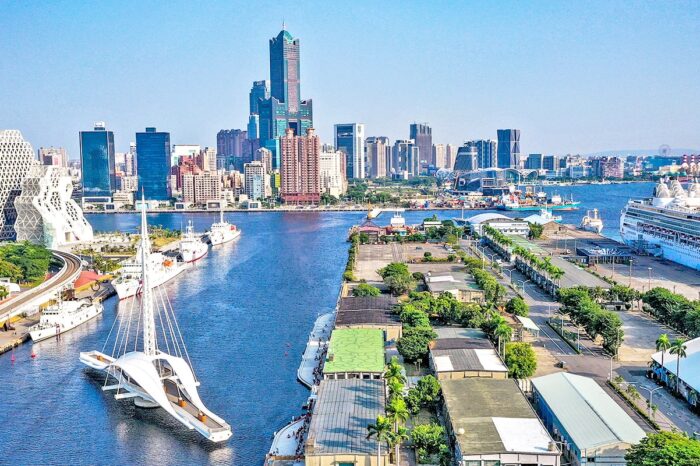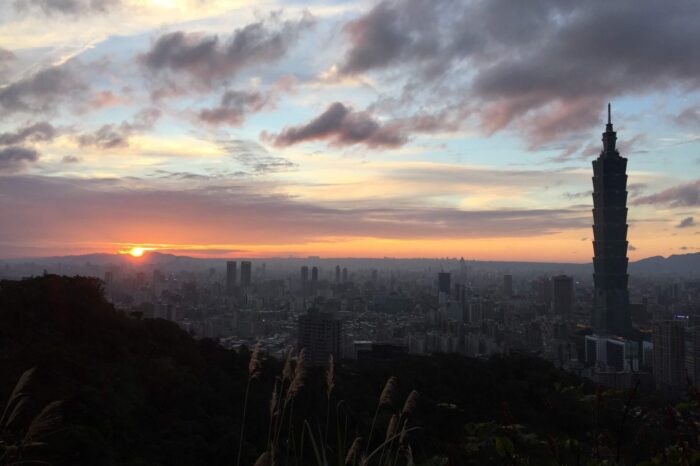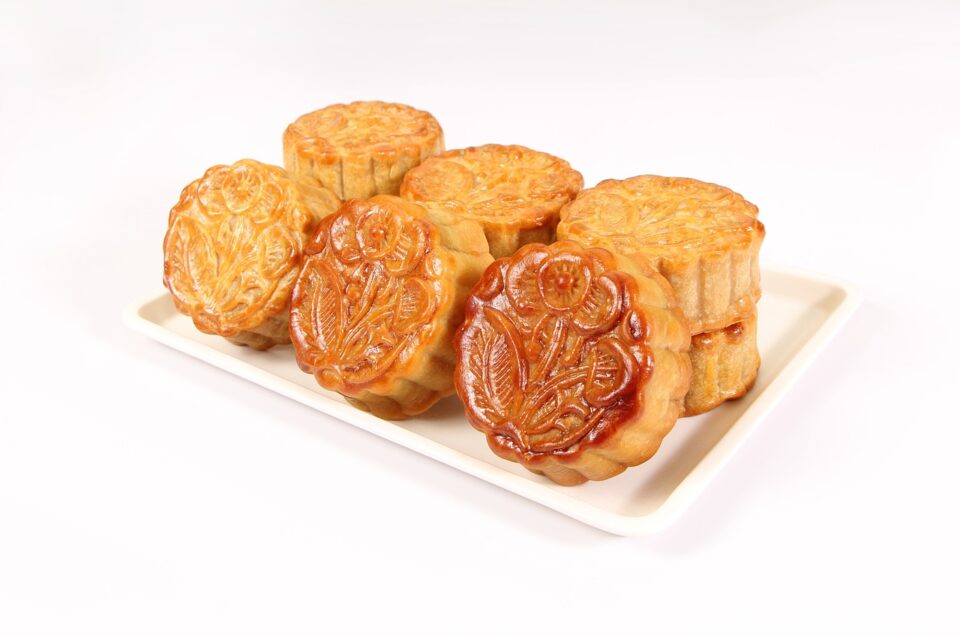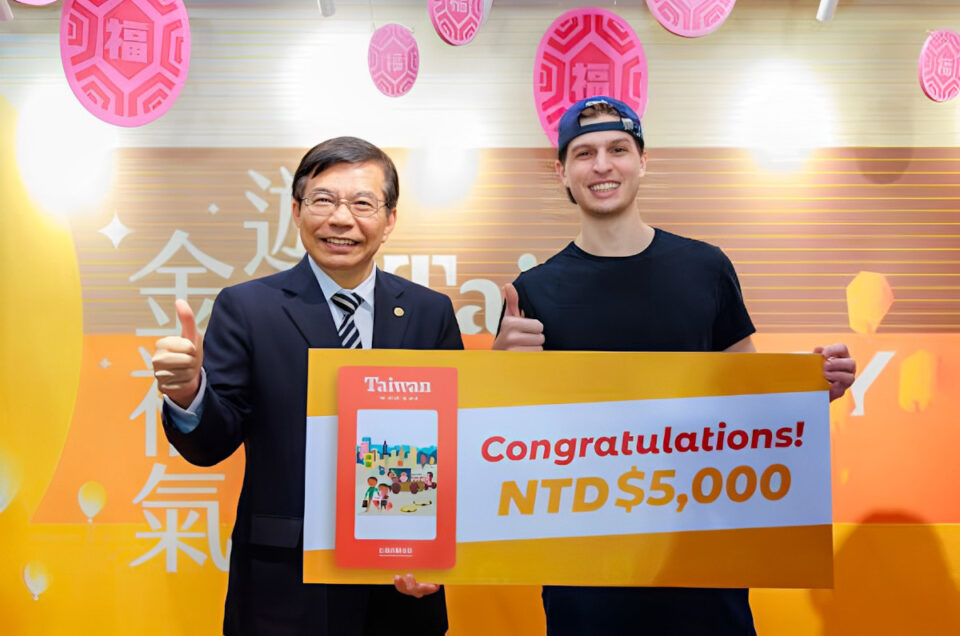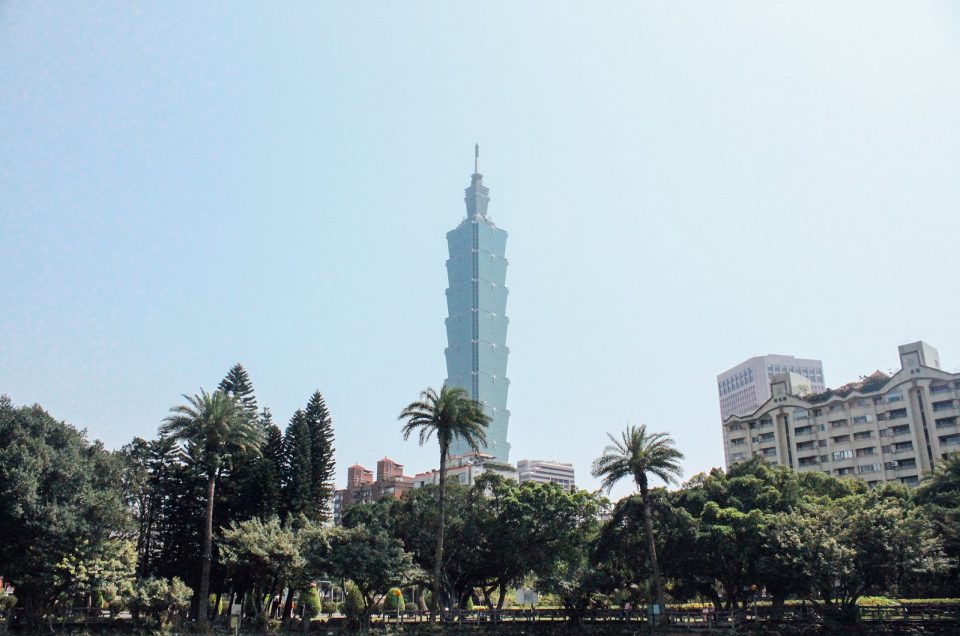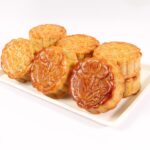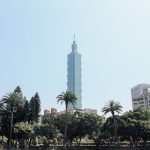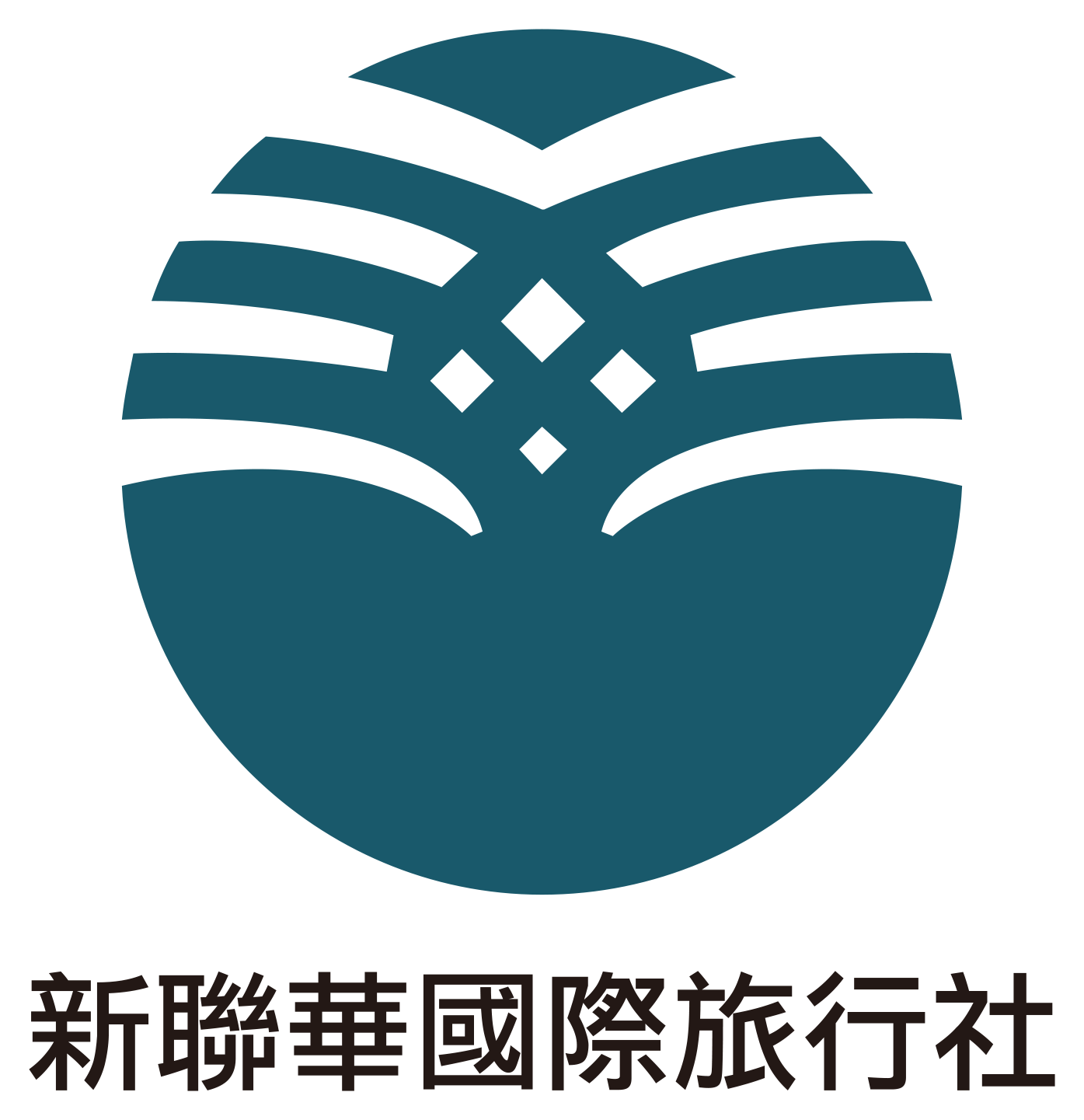The Dragon Boat Festival (端午節), also known as the «Double Fifth Festival» or the «Five Days Festival» (五日節), is celebrated on the fifth day of the fifth month of the Lunar calendar (corresponding to late May or June) in Taiwan, China and other countries. It’s tradition to celebrate it by eating the famous zongzi 粽子 (sticky rice, filled and wrapped using bamboo leaves) and also holding dragon boat races.
But where do all these traditions come from and how are they celebrated in Taiwan?
May, a Cursed Month in the Lunar Calendar
The origins of Dragon Boat Festival celebrations date back to a time before the Qin Dynasty. In those ancient times, people noticed that the weather began to change and grow hotter in the fifth month of the lunar calendar. Snakes, scorpions, and other insects multiplied during this period, causing various illnesses. As a result, the month of May came to be seen as cursed.
Traditionally, the fifth month of the lunar calendar has been considered an ill-fated month.
According to the lunar calendar and the system of Earthly Branches, the fifth month is associated with the Chinese character “午” (wǔ). The fifth day is written as “初五” (chūwǔ), which means “the beginning of the fifth day” and is also known as “端五” (duānwǔ). Over time, the combination of the Chinese characters for the fifth month (午) and the day (端五) evolved into the present-day “端午節” (Dragon Boat Festival).
Because of this, May 5th was considered an unlucky day, and people began using various methods to repel poison and bad omens. Traditions such as collecting wormwood, calamus or banyan leaves, and hanging them on doors, tying silk threads around their arms, or consuming specific alcoholic beverages are still part of Taiwanese customs that are practiced to this day.
The legend of Qu Yuan
According to this legend, the festival commemorates the death of the Chinese poet Qu Yuan (c. 340-278 BC) during the Warring States period of the Zhou Dynasty. Qu Yuan hailed from the ancient State of Chu, a vassal state of the Zhou Dynasty. Due to the wars of that period, the State of Qin captured the capital of the State of Chu (Ying), and Qu Yuan, in despair, drowned himself in the Miluo River. This happened precisely on the fifth day of the fifth month.
Continuing with the legend, it is said that local villagers rushed to their boats to try to save him or, at the very least, retrieve his body. When his body could not be found, the villagers began throwing rice into the river so that the fish would eat them instead of Qu Yuan’s body. During the evening, the spirit of Qu Yuan manifested in front of the villagers and conveyed that he perished by plunging himself into the river. He asked them to wrap their rice into three-cornered silk packages to ward off the dragon.
This legend would give rise to the tradition of both boat races and eating zongzi.
Zongzi 粽子
We cannot talk about a celebration in Taiwan without food playing a fundamental role. During the Dragon Boat Festival, it is common to eat these delicious treats made of glutinous rice wrapped in bamboo leaves. The fillings can vary greatly, but we can classify them into two main categories: sweet fillings and salty fillings.
North vs South
If there’s something that divides Taiwanese society (aside from political affiliations), it’s the north vs south culinary rivalry. Not only are there region-specific dishes, but in general, southern cuisine is known for being sweeter, while northern cuisine is considered saltier.
The north-south culinary rivalry extends to zongzi as well. In the north, the rice is less sticky, and the fillings are saltier. In contrast, the south tends to have stickier rice and lighter flavors, often leaning more towards dessert-like zongzi. Additionally, there are Hakka-style zongzi (Hakka represents 15% to 20% of Taiwan total population).
What a mess! Let’s try to describe the main characteristics of each style:
1. Northern Style
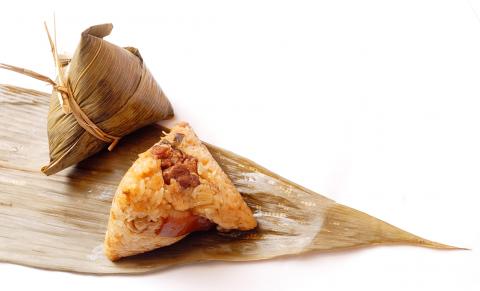
First, glutinous rice is fried with oil along with the fillings, then wrapped in osmanthus leaves (a plant native to Asia), and finally steamed.
Frying the glutinous rice with plenty of oil results in a less sticky texture.
Typical fillings in the Northern style include:
- Pork belly
- Bamboo shoots
- Dried mushrooms
- Dried shrimps
- Salted egg yolks
- Dried radish
These fillings, combined with glutinous rice and oil, make Northern zongzi an authentic calorie bomb! (500-600 calories per regular-sized zongzi).
2. Southern Style
They are usually made with non-fried glutinous rice, various fillings, wrapped in bamboo leaves, and boiled in hot water at high temperature.
Because it takes longer to cook this way, the resulting rice has a more glutinous and dense/sticky texture. Compared to the Northern versions, Southern zongzi has a lighter and less greasy flavor. However, it is common in the South to add peanuts to the glutinous rice.
Typical fillings in the Southern style include:
- Peanuts
- Pork
- A type of onion or scallion
- Chestnuts
- Taro
A regular-sized Southern zongzi contains around 400-500 calories.
3. Hakka Style
Taiwan is a multicultural and multi-ethnic country where the Hakka population comprises approximately 20% of the total.
In Hakka style, the rice grains are replaced with a sticky dough made from glutinous rice flour, giving them a visually distinct appearance compared to the other two versions. Like the Northern style, Hakka zongzi is also steamed.
Typical fillings in the Hakka style include:
- Meat
- Dried shrimps
- Dried radish
- Dried tofu
They are smaller in size and contain only around 300 calories.
HolaTaipei Travel
Discover all our tailored-made experiences!
Finally, let’s take a look at the following survey conducted during the 2022 celebrations, which shows that Southern zongzi enjoys wide acceptance in Taiwan and therefore emerges as the clear winner of this battle (but for how long…?).
Dragon Boat Races
The famous Dragon Boat Races have their origin in the legend of Qu Yuan and are a spectacular sight to behold. These competitions take place in various cities around the world during the Dragon Boat Festival and have a history of over 2000 years. The elongated dragon-shaped boats are believed to have originated from ancient rituals and ceremonies where prayers were offered to the water gods to prevent floods and other natural disasters.
In Taipei, the Annual Taipei International Dragon Boat Championship is held, which is the largest and most popular race in Taiwan. This competition involves various blessing rituals for the participants and the river, where Taoist monks bring the dragon boats to life by painting the pupils of their eyes.
There are several competition categories, but the boats usually measure between 15 and 30 meters in length and have around 16 to 18 rowers. Typically, there is a person with a drum to set the rhythm for the rowers, and another person at the bow whose role is to capture the flag.
The most famous race is the 500-meter race, where the fastest boat to capture the flag emerges as the winner.
Farewell
Have you ever tried zongzi in your city? Or perhaps you have visited Taiwan but were unaware of the great North vs South battle? What do you think of traditions like the dragon boat races? Please leave your comments below or feel free to ask us any questions through our website and/or social media channels. Don’t forget to subscribe to stay updated! 🙂
Remember that at HolaTaipei Travel, we specialize in organizing your trip to Taiwan, providing hotel reservations, transportation, and Spanish or English speaking guides. We’ll be waiting for you!


